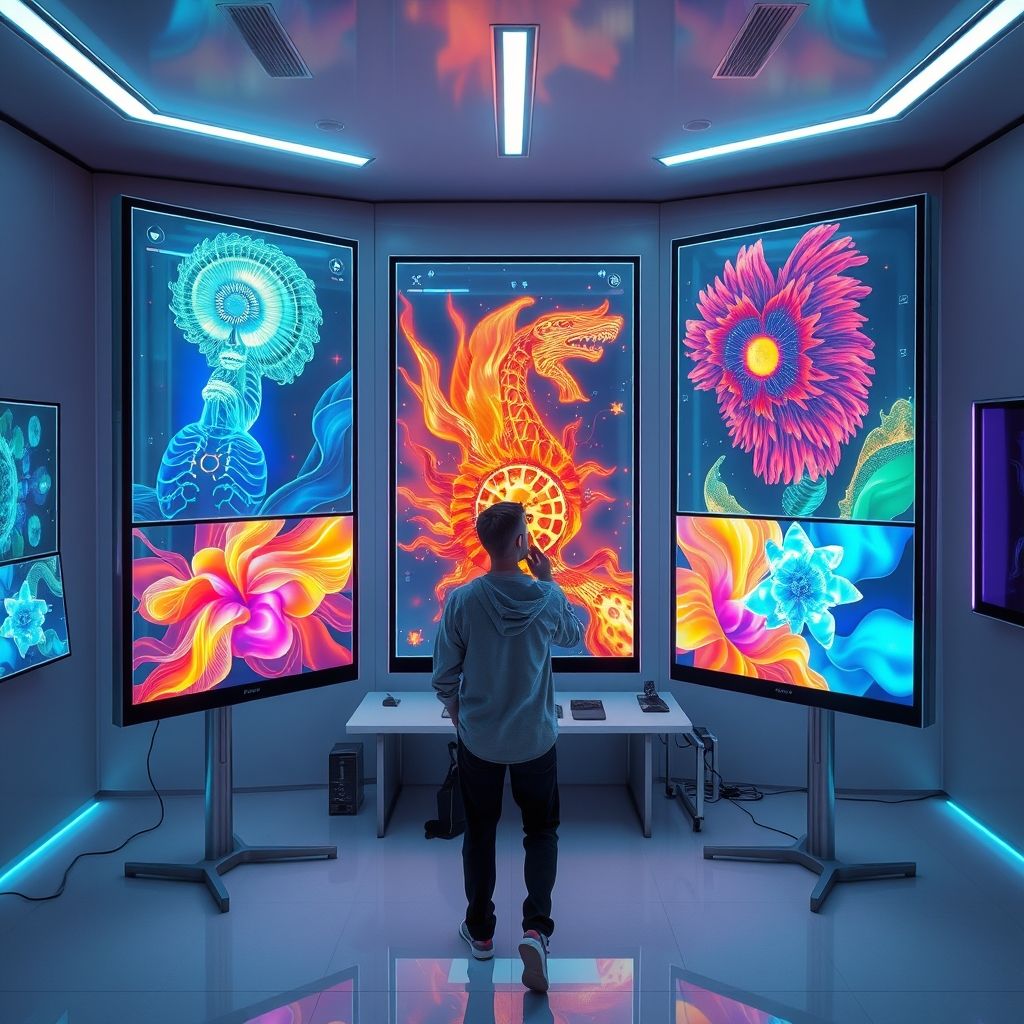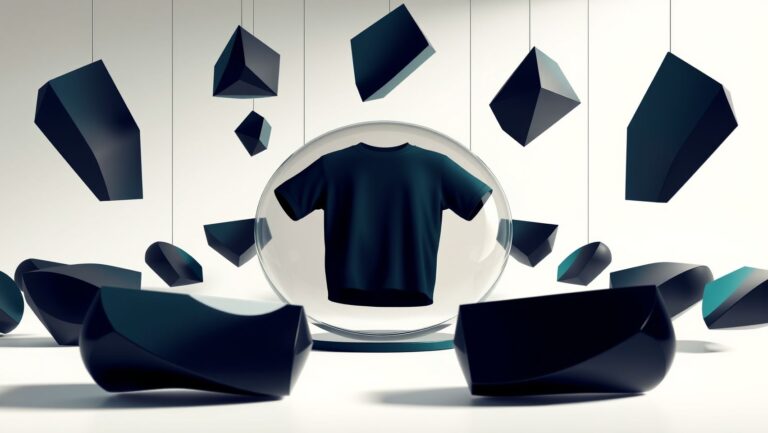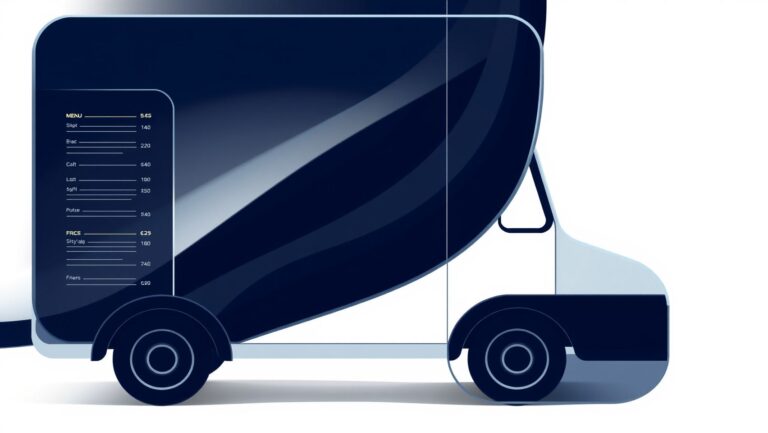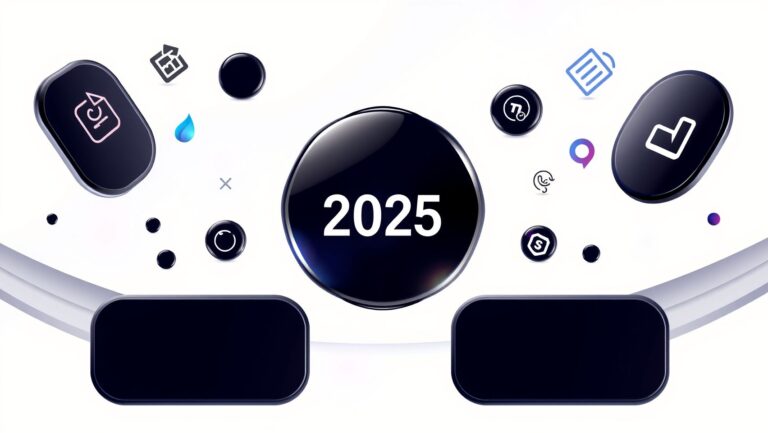How to Choose the Best AI Image Generator for Your in 2025: DALL-E 3 vs Midjourney vs Stable Diffusion
Ever wondered which AI image generator will truly elevate your blog in 2025? With tools like DALL-E 3, Midjourney, and Stable Diffusion dominating the scene, picking the right one can feel overwhelming. Bloggers everywhere face the same headache — balancing pricing, mastering ease of use, and figuring out seamless integration with their favorite platforms.
AI-generated images aren’t just a flashy trend anymore; they’re essential for grabbing attention, boosting engagement, and making your content pop. But not all AI tools are created equal. Which one fits your style, budget, and technical comfort level? That’s exactly what we’re diving into.
In this article, you’ll get a clear comparison of these top contenders, plus practical tips to supercharge your blogging workflow. Ready to discover the smartest pick for your creative toolkit and give your blog the visual edge it deserves? Let’s get started!
What Latest Data Says About DALL-E 3, Midjourney, and Stable Diffusion
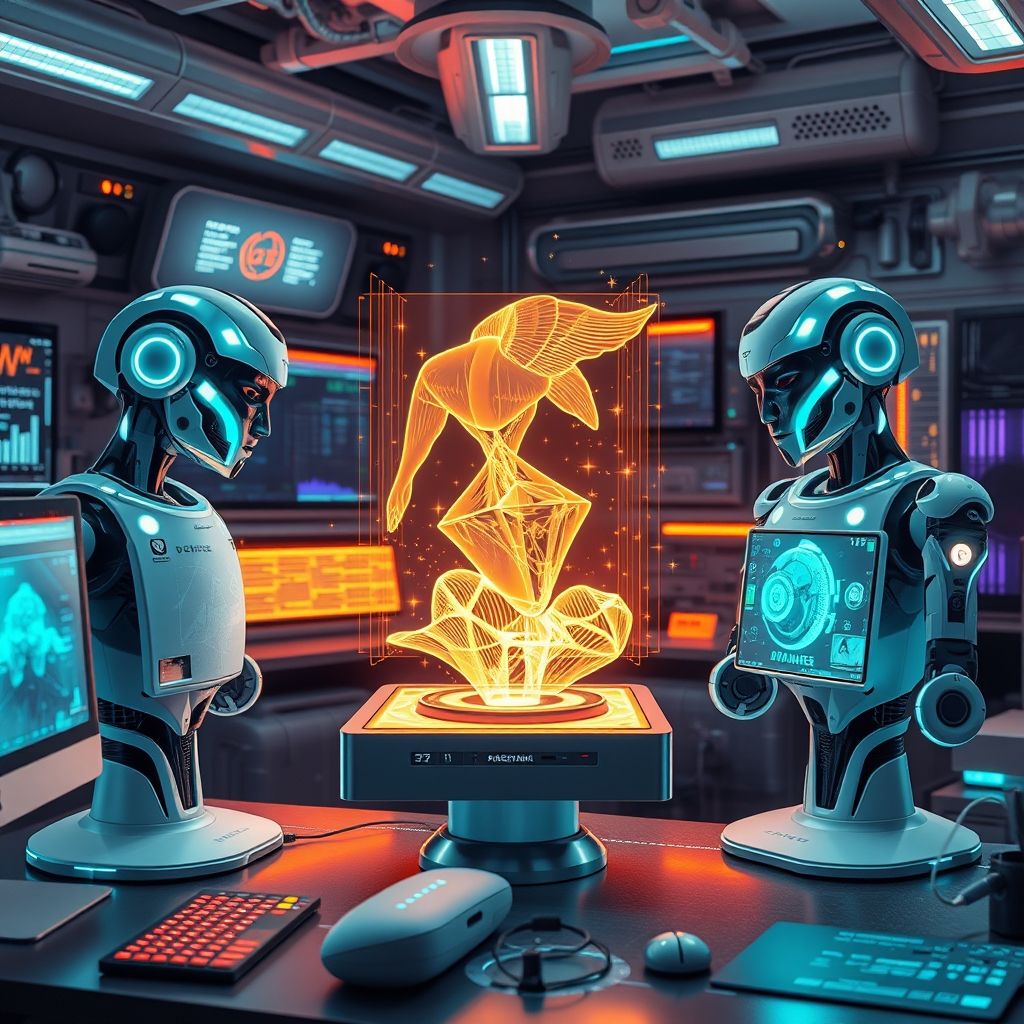
As AI image generators evolve rapidly, understanding their current strengths and trade-offs is vital for bloggers seeking the best fit. Recent comparisons shed light on how DALL-E 3, Midjourney, and Stable Diffusion stack up across crucial factors such as pricing, image quality, customization, and overall user experience. This snapshot provides a practical lens through which bloggers can evaluate each platform’s potential impact on content creation workflows.
From straightforward subscription models to nuanced interface designs and community support, each tool brings unique benefits. Examining these aspects side by side helps clarify their usability and efficiency for generating diverse, eye-catching blog visuals in 2025.
Pricing and Subscription Models
DALL-E 3 adopts a pay-as-you-go approach supplemented by monthly subscription tiers, starting around $15 for basic access, which includes a set number of image generations per month. Additional credits are purchasable for higher demand, making it flexible but potentially costly for heavy users.
Midjourney operates primarily on a subscription model priced between $10 and $30 monthly, depending on usage limits and commercial rights. This fixed cost caters well to regular creators who value predictable billing and unlimited personal use on higher tiers.
Stable Diffusion distinguishes itself with an open-source core empowering self-hosting or cloud-based options. Commercial cloud services generally start around $20/month but offer more control over costs due to adjustable computing usage. This flexibility appeals to users with technical expertise or those wanting to scale thoughtfully.
Image Quality: Resolution and Creativity
In terms of raw image quality, DALL-E 3 excels with high-resolution outputs (up to 1024×1024 pixels) and advanced scene understanding. It produces highly coherent and creative visuals, particularly suited for detailed and imaginative blog content.
Midjourney’s strength lies in its artistic flair — images are often described as strikingly vibrant, with a painterly or stylized edge. Resolution caps around 1024×1024 pixels as well but the platform prioritizes aesthetics that resonate with creative storytelling.
Stable Diffusion offers extensive customization to tweak resolution (up to 2048×2048 pixels in some versions), enabling sharper images. Creativity depends significantly on prompt engineering and model variants used, granting users high degrees of control but also a steeper learning curve.
Ease of Use and Onboarding Experience
DALL-E 3 features a clean, web-based interface designed for intuitive use. New users appreciate guided prompts and instant feedback loops that minimize trial and error, striking a balance between simplicity and power.
Midjourney operates mainly through Discord, which can be less approachable for newcomers unfamiliar with chatbots or server navigation. However, once acclimated, its workflow is fast and social, benefiting those who enjoy community interaction alongside creation.
Stable Diffusion’s usability varies widely—commercial products provide user-friendly GUIs, but many users interact with it through command line or third-party apps. The initial setup and prompt mastery can be barriers but yield greater flexibility in the long run.
Unique Features and Limitations
- DALL-E 3 integrates tightly with OpenAI’s ecosystem, allowing seamless access through ChatGPT and other apps, which enhances blog integration for dynamic content generation.
- Midjourney offers distinctive style parameters and frequent model updates, enabling fresh creative outputs but limiting fine-tuned control over technical aspects like resolution.
- Stable Diffusion stands out due to its open-source nature, which fosters an expansive community-driven development of plugins, extensions, and specialized models.
However, DALL-E sometimes struggles with complex scene consistency, Midjourney can be unpredictable in rendering literal prompts, and Stable Diffusion requires considerable technical know-how to optimize performance.
Performance Speed and Reliability
On average, DALL-E 3 delivers images within seconds on cloud servers with high uptime and stable performance. Its robust infrastructure supports smooth handling of batch requests, which is ideal for bloggers needing quick turnaround.
Midjourney’s response time depends on server loads within Discord, often ranging from a few seconds to a minute. While generally reliable, peak usage periods can cause delays.
Stable Diffusion’s speed varies widely based on the hosting environment. Local GPU setups provide near-instant results, but cloud instances may fluctuate depending on resource allocation and user demand.
Community and Support Resources
DALL-E 3 benefits from comprehensive official documentation and active forums within OpenAI’s user community. Customer support is professional, with quick resolution channels.
Midjourney boasts a vibrant Discord-based community that facilitates peer help, creative challenges, and regular announcements, fostering a collaborative atmosphere but reliant on community-driven support.
Stable Diffusion’s broad open-source ecosystem includes extensive tutorials, GitHub repositories, and user forums. However, formal support varies widely by provider, often requiring independent problem-solving.
In summary, each AI image generator offers a compelling mix of features tailored to different blogging needs: DALL-E 3 balances ease and advanced creativity, Midjourney excels in artistic expression within a social framework, and Stable Diffusion appeals to those hungry for customization and control. Selecting the right tool depends on budget, desired image style, and technical comfort level.
How to Pick the Right AI Image Generator Based on Your Blog’s Needs
Choosing the ideal AI image generator for your blog involves more than just picking the most popular tool. Your unique goals, budget, technical skills, and content style all play a huge role in which platform will serve you best. Below, we break down what to consider so you can confidently align your blogging needs with the strengths of DALL-E 3, Midjourney, or Stable Diffusion.
By focusing on cost-effectiveness, style matching, ease of use, integration capabilities, and scalability, you’ll make an informed choice that supports both immediate projects and future growth.
Budget Constraints and Cost-Effectiveness
Bloggers on a tight budget should first evaluate the pricing structure and overall value of each AI tool. DALL-E 3 often operates on a credit system allowing pay-as-you-go flexibility, ideal for infrequent image creation without a heavy upfront commitment. Midjourney uses a subscription model, which can be cost-effective if you generate images regularly. Stable Diffusion, frequently open-source and self-hosted, offers a more customizable and potentially free solution, but may require a technical setup and computing resources.
Consider how many images you need monthly and weigh that against subscription fees or the cost of infrastructure. For example, if your blog requires dozens of images each week, a Midjourney subscription might save money overall, while casual bloggers could benefit from DALL-E 3’s sporadic credit purchases.
Matching Image Style and Quality to Your Blog Niche
Your blog’s niche dictates the types of visuals that will resonate best with your audience. Midjourney excels at creating highly artistic, stylized images ideal for creative, lifestyle, or fashion blogs. DALL-E 3 shines in versatility, producing clean, realistic images that fit corporate, tech, or educational content.
Stable Diffusion, with its customizable models, can be fine-tuned to match almost any aesthetic—perfect if you want distinct branding or niche-specific imagery.
Ease of Use for Beginners vs Advanced Users
If you prefer a straightforward user experience with minimal learning curves, DALL-E 3 generally offers the most beginner-friendly interface. Midjourney, accessible through Discord, may require a little adjustment but remains intuitive after brief practice. Stable Diffusion, while powerful, often demands more technical know-how, especially if setting up locally or modifying parameters for tailored images.
Select a tool that matches your comfort level and how much time you want to spend learning the platform. This ensures image creation is a seamless part of your blogging workflow.
Evaluating Platform Integration Options with CMS and Blogging Tools
Integration capabilities can streamline your process by embedding image generation directly into your content management system (CMS). DALL-E 3 features API access that some blogging platforms support, allowing smoother insertion of visuals. Midjourney’s Discord-based workflow may require downloading images manually, which is less seamless but manageable.
Stable Diffusion’s open-source nature allows for custom integrations with CMSs if you have developer support. Look out for plugins or community tools that connect these AI platforms to WordPress, Ghost, or other blogging environments.
Scalability for Increasing Content Volume
As your blog grows, so will your image needs. Midjourney’s subscription tiers scale well, providing more generation credits at higher levels. DALL-E 3’s pay-per-image model can adapt, but costs may rise sharply with volume. Stable Diffusion can scale with your hardware capacity or cloud setup, though this may mean investing in infrastructure.
Ensuring a platform can handle your projected content pace without bottlenecks or unwanted costs is key to maintaining a stress-free creative flow.
Support and Learning Resources Importance
Strong community support and official tutorials accelerate your mastery of these tools. DALL-E 3 is backed by extensive documentation and active forums. Midjourney’s Discord community is vibrant and responsive, offering inspiration and troubleshooting. Stable Diffusion benefits from numerous open-source tutorials and developer-driven forums but may require more effort to navigate.
Choosing a platform where support aligns with your learning style reduces frustration and helps you maximize output quality faster.
Step-by-Step Tips to Seamlessly Integrate AI Images into Your Blog
Incorporating AI-generated images into your blog can elevate your content’s visual appeal while enhancing user engagement. However, to make the most out of these visuals, it’s key to optimize them for quick loading, search engine visibility, and accessibility. This section breaks down practical steps to help you integrate AI art smoothly and effectively into your blog posts.
From file optimization to SEO best practices and creative usage ideas, you’ll discover how to turn AI-generated images from simple decorations into strategic assets that boost your blog’s performance and style.
File Format and Size Optimization Techniques
Efficient file handling ensures your blog pages load quickly, providing better user experience and SEO scores. Start by selecting the right image formats based on your needs:
- WebP: Superior compression with good quality retention, ideal for modern browsers.
- JPEG: Best for photographic images; optimize with quality settings around 70-80% to balance clarity and file size.
- PNG: Good for images requiring transparency, but tends to have larger file sizes.
Use tools such as TinyPNG, ImageOptim, or Squoosh to compress images without noticeable quality loss. Resize images to match your blog’s display dimensions to avoid unnecessary loading of oversized files. Additionally, implement lazy loading techniques using HTML attributes like loading="lazy" to defer image loading until they enter the viewport.
Best Practices for SEO with AI-Generated Images
Optimizing AI images for SEO helps drive organic traffic to your blog. Begin with descriptive, keyword-rich file names instead of generic titles like “image1.png”. Use concise but informative alt text that includes relevant keywords naturally to improve accessibility and search engine understanding.
Leverage image sitemaps or include images in your existing sitemap to ensure search engines discover your visuals. Structured data markup, such as schema.org’s ImageObject, can further enhance search results with rich snippets.
Creative Ways to Incorporate AI Art That Enhances Blog Content
AI images can serve many roles beyond eye candy. Use them to illustrate complex ideas, visualize data or concepts, and add personality to technical content. For instance, generate custom graphics showing trends or unique fictional scenes that resonate with your article’s tone.
Consider pairing AI art with captions or short stories to add context and engage readers emotionally. Experiment with consistent visual themes across posts to create a cohesive brand identity.
Tools and Plugins to Automate Image Integration
Streamline your workflow by using plugins and tools that automate image optimization and insertion. WordPress plugins like Smush or EWWW Image Optimizer can compress and resize images on upload. AI-specific tools, such as AI-generated image galleries or API integrations from DALL-E or Midjourney, can directly embed freshly generated visuals.
Content management systems with media libraries and automatic alt text generation reduce repetitive tasks and help maintain SEO standards consistently.
Accessibility Considerations for Images
Ensuring your images are accessible broadens your audience. Always use meaningful alt attributes describing the image content to assist screen readers. Avoid relying solely on images to convey critical information—complement visuals with descriptive text where appropriate.
Check color contrasts within AI-generated images to support viewers with visual impairments and consider offering downloadable versions for enhanced usability.
Troubleshooting Common Image Display Issues
If AI images fail to load or display incorrectly, first verify the file paths and ensure images are uploaded to the correct server directories. Clear any caching layers that might serve outdated versions.
Check compatibility issues with various browsers or devices by testing responsiveness and format support. Sometimes regenerating images in alternate formats or sizes solves rendering glitches. Finally, review your CMS or theme settings that might restrict image dimensions or affect loading behaviors.
—
Boost your blog’s AI images with seamless optimization tips in our guide—[Learn more](https://pollinations.ai/redirect/letsenhance).
Beyond the Basics: Addressing Ethical and Copyright Questions with AI Images
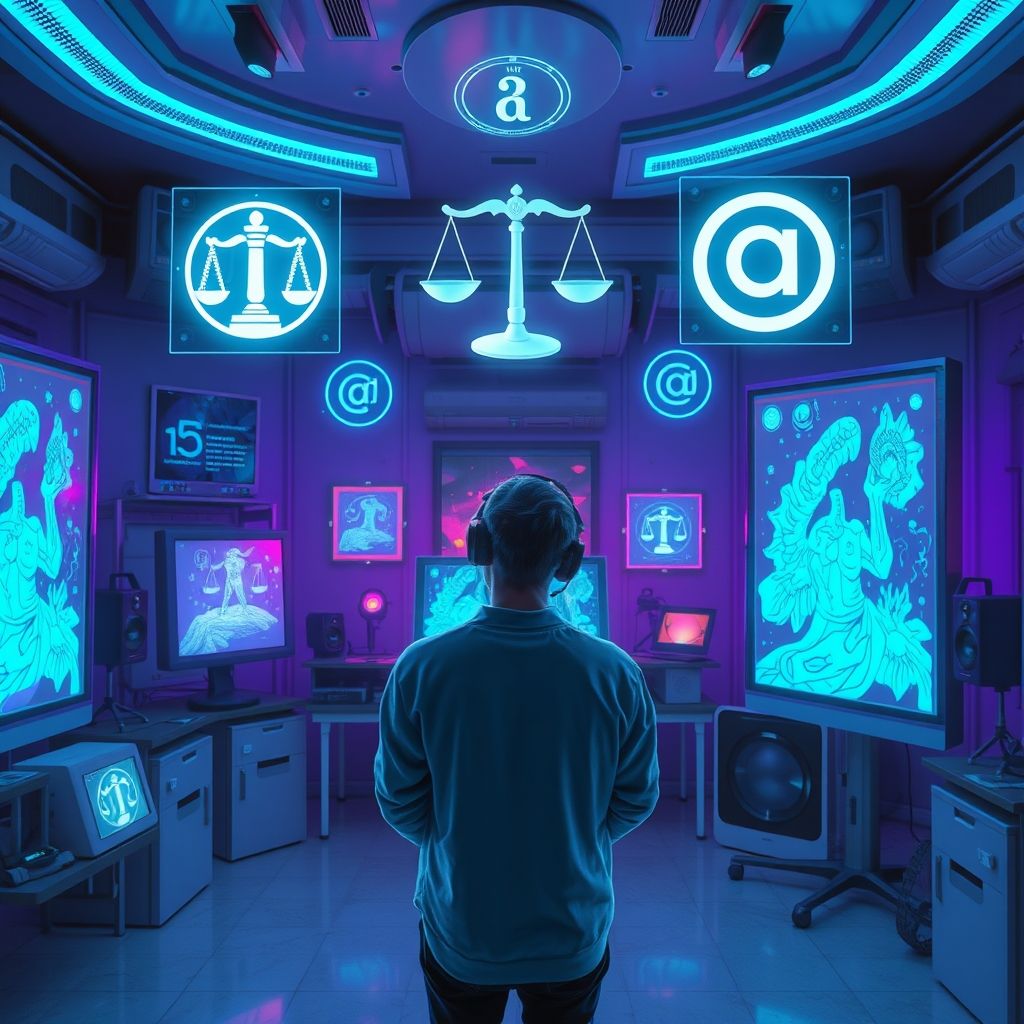
Using AI image generators like DALL-E 3, Midjourney, or Stable Diffusion offers bloggers exciting creative possibilities, but it also raises some often overlooked concerns. As these tools evolve, understanding legal and ethical implications becomes just as important as mastering their technical features. Navigating copyright, respecting artistic originality, and staying aligned with terms of use are crucial steps that protect both creators and audiences.
This section delves into these nuanced questions to help bloggers confidently integrate AI-generated images into their projects without unintended pitfalls.
Understanding Copyright Status of AI-Generated Images
Copyright ownership for AI-generated images remains a gray area legally. In many jurisdictions, pure AI outputs without significant human input may not qualify for traditional copyright protection, meaning these images can sometimes fall into the public domain or be considered unowned. However, the degree of human creativity involved—such as prompt writing, editing, or stylizing—can affect eligibility for copyright claims.
For bloggers, this means it’s wise to document how much creative effort you contribute when generating images, as it may strengthen your claim of ownership and control over usage rights.
Navigating Terms of Service for Commercial Blog Use
Each AI tool has its own terms regarding commercial use, and bloggers should carefully review these before publishing AI-generated images. For example, OpenAI’s DALL-E 3 permits commercial use under specific license agreements, while Midjourney’s subscription plans include clear commercial rights but restrict certain content categories.
Review these policies regularly since providers update their terms in response to legal and market changes. Ignoring terms of service risks unexpected copyright disputes or even account suspension.
Avoiding Plagiarism and Respecting Creative Originality
Even though AI images are generated algorithmically, these systems often train on vast datasets of existing artworks. This means some outputs may unintentionally replicate styles or elements from artists without attribution. Bloggers should be cautious not to pass AI images off as fully original creations if they resemble known works.
Combining AI tools with your own modifications or original content can help maintain ethical integrity by acknowledging the machine-assisted nature of the final image.
Ethical Considerations About AI Art Use in Blogging
Beyond legalities, ethical questions arise around AI art’s impact on human creators and the cultural value of originality. Some argue that overusing AI-generated content may devalue traditional artistry and reduce opportunities for human artists.
Bloggers might consider balancing AI images with content that highlights human creativity or openly discussing their use of AI to foster transparency and respect for artistic communities.
How to Credit or Not Credit AI Tools Appropriately
Deciding whether and how to credit AI image generators depends on your blog’s style and your readers’ expectations. While AI tools generally don’t require attribution, some bloggers choose to mention them for transparency or to inform audiences about the creation process.
Simple credits like “Image created with Midjourney” or including the prompt used can enrich your content and signal ethical practices, setting a positive example for the blogging community.
Future Trends in AI Image Rights and Legislation
The legal landscape around AI image generation is evolving rapidly. Lawmakers worldwide are exploring new frameworks to clarify rights around AI-created content, potentially establishing specific protections or rules on commercial use.
Staying informed on these developments will help bloggers adapt their practices proactively, ensuring compliance while making the most of AI’s creative power.
Boosting Engagement: How AI Images Can Increase Blog Readership and Shares

In today’s fast-paced digital environment, captivating visuals are a cornerstone of driving meaningful blog engagement. The rise of AI-powered image generators like DALL-E 3, Midjourney, and Stable Diffusion empowers bloggers to craft tailor-made visuals that not only catch the eye but also boost clicks, time spent on the page, and social sharing. Leveraging AI images strategically can transform a standard blog post into an unforgettable experience for readers and supercharge your content’s reach.
By integrating intelligent image creation into your blogging workflow, you can experiment with unique visuals that align perfectly with your message. This section explores proven tactics and examples that reveal how AI-generated imagery can amplify your blog’s impact while providing actionable insights to maximize their effectiveness.
Why Eye-Catching Visuals Drive Clicks and Time on Page
Studies consistently show that content with compelling visuals gets substantially more attention. Posts with relevant images can receive up to 94% more views and readers tend to spend 80% more time engaging with pages featuring rich visuals. Custom AI-generated images grab attention in crowded feeds and create emotional connections that simple stock photos often miss.
Eye-catching images serve as visual hooks, increasing both the likelihood of initial clicks and longer on-page engagement. AI tools uniquely enable bloggers to produce images tailored to their niche and tone, avoiding generic visuals and standing out in search results and social media feeds alike.
Using AI to Create Custom Thumbnails and Featured Images
Your blog’s first impression often comes from its thumbnail or featured image. Crafting custom AI images allows you to design exclusive, relevant visuals that capture a post’s essence at a glance. Experiment with different styles, colors, and motifs using DALL-E 3’s detailed generation, Midjourney’s artistic flair, or Stable Diffusion’s open customization to match your brand identity perfectly.
Custom thumbnails can improve click-through rates on platforms like Google and social media by presenting a uniquely intriguing preview. Running A/B tests with AI images against stock photos can yield valuable data on which designs resonate most with your audience.
Pairing Images with Headlines for Maximum Impact
Combining AI-generated visuals that directly complement your headlines creates a harmonious storytelling experience. Strong headline-image alignment reinforces the message and enhances memorability, increasing the chances readers share content organically. For example, pairing an emotionally charged headline with a striking AI portrait or symbolic graphic builds deeper engagement.
Try creating multiple image variations keyed to different headline angles. Use analytics to identify which pairings drive more clicks and shares, refining your approach with each post. Leveraging AI’s speed for rapid iterations encourages an agile and creative mindset towards blog design.
Integrating AI Art into Social Media Promotions
Social media platforms thrive on visually rich content, and AI art can elevate your promotional posts to new heights. Create eye-popping snippets, carousel fields, or story backgrounds drawn from your blog’s AI-generated images to catch scrollers’ attention instantly. Customize images per platform requirements, ensuring optimized size and format.
By consistently using AI art across social channels, you build a recognizable visual style that fosters brand recall. This seamless integration also encourages users to share, comment, and engage, expanding your blog’s reach beyond organic search.
Analyzing Image Performance with Analytics
Tracking how AI-generated images perform is crucial for honing your content strategy. Use tools like Google Analytics and social media insights to monitor metrics such as bounce rate, click-through rates, and share frequency linked to posts with different types of AI visuals.
Identify patterns showing which image styles, colors, or themes resonate best with your audience. Analytics-guided experimentation lets you invest more confidently in visual styles that consistently boost interaction, turning AI images from a novelty into a growth driver.
Examples of Successful Blog Campaigns Using AI Visuals
Several bloggers have already harnessed AI image generators to elevate their campaigns. For instance, a popular travel blogger used Midjourney to create surreal destination art, resulting in a 30% increase in shares and a spike in organic traffic. Another tech blog employed DALL-E 3 to generate futuristic concept images tied to their articles, attracting a younger demographic and longer session durations.
These examples illustrate that blending creative AI visuals with targeted content can unlock new levels of engagement. The key takeaway: experiment boldly and manage insights strategically to discover what best captivates your particular readership.
Future-Proofing Your Blog: What’s Next for AI Image Generators in 2025 and Beyond
As AI image generators continue to evolve rapidly, bloggers aiming to stay ahead must keep an eye on transformative features set to redefine digital content creation. The shift from static visuals to dynamic, immersive imagery is poised to unlock new storytelling avenues, making it crucial to understand emerging trends and prepare accordingly.
Looking beyond 2025, the convergence of AI capabilities with user-centric improvements will shape how bloggers integrate images seamlessly into their workflows. This section explores the innovations on the horizon and offers practical tips on adapting your blogging strategy for maximum impact.
Emerging Capabilities: Real-Time Video and 3D Image Generation
Leading AI platforms like DALL-E 3, Midjourney, and Stable Diffusion are increasingly moving beyond 2D imagery. Real-time video generation, powered by advances in neural rendering, will allow bloggers to create tailor-made, motion-based content without expensive software or production teams. Similarly, 3D image generation tools will enable interactive visuals, perfect for product showcases, tutorials, or immersive storytelling.
To prepare, bloggers should experiment with current beta releases or plugins offering early access to these innovations. Familiarizing yourself with 3D modeling basics or video editing within AI ecosystems will provide a competitive advantage as these capabilities enter mainstream use.
Evolving Pricing Models and Accessibility
The pricing landscape for AI image generators is becoming more flexible, with growing adoption driving competition and diverse subscription options. Expect tiered pricing that accommodates casual bloggers, professional content creators, and enterprises alike, often bundled with additional AI content tools.
Keep an eye on pay-as-you-go and credit-based systems—these allow more control over costs without sacrificing output quality. Accessibility improvements will also lower barriers, enabling bloggers worldwide to leverage advanced AI features without requiring powerful hardware or steep learning curves.
Enhanced Customization and User Control
Future AI tools will offer increasingly granular controls over output aesthetics and style, empowering bloggers to maintain a distinct visual voice. AI models are expected to incorporate user feedback loops that fine-tune results over time, aligning closely with brand identity and content themes.
Exploring customization options now—such as style transfer settings, prompt engineering techniques, or AI-assisted image editing—can set the stage for more personalized and consistent imagery as tools become smarter and more intuitive.
Integration with Broader AI Content Ecosystems
Seamless integration between image generators and other AI-driven content creation tools will unlock powerful synergies. For example, coupling AI-generated imagery with AI-written copy or social media scheduling bots streamlines production, saving time and improving coherence.
Bloggers should consider platforms or plugins that support cross-tool workflows, enabling automated generation of end-to-end blog posts with minimal manual intervention. This connectivity will further elevate efficiency and creative possibilities.
Community-Driven Enhancements and Open-Source Momentum
The open-source movement and vibrant user communities are accelerating innovation in AI image generation. Tools like Stable Diffusion thrive on community contributions, with new models, plugins, and tutorials constantly emerging to expand capabilities.
Engaging with these communities offers access to cutting-edge features and collaborative problem-solving, a distinct advantage for bloggers committed to evolving their skills alongside the technology. Participating in forums or contributing to projects is also a way to influence future directions.
Staying Informed for a Competitive Edge
In a fast-changing landscape, staying updated on AI image generation trends isn’t optional—it’s strategic. Subscribing to industry newsletters, attending webinars, and experimenting with new tools as they launch helps bloggers anticipate shifts and adapt content strategies proactively.
Early adopters will find unique opportunities to captivate audiences with innovative visuals that set their blogs apart. Investing time in continuous learning and experimentation ensures your blog remains fresh, engaging, and future-proof.
Conclusion
Choosing the right AI image generator in 2025 comes down to understanding how DALL-E 3, Midjourney, and Stable Diffusion align with your blog’s unique style, budget, and technical comfort. Whether it’s the seamless integration and user-friendly interface of DALL-E 3, the artistic flexibility of Midjourney, or the affordability and customization of Stable Diffusion, each tool offers distinct advantages that can elevate your visual storytelling.
Smartly weaving AI-generated images into your content not only grabs attention but also sets the stage for future trends where visuals and narrative merge effortlessly. Remember, experimenting with these tools now puts you ahead in crafting bold, engaging blog posts that resonate in an increasingly visual online world.
- Match your choice to your blog’s goals, tech comfort, and budget.
- Prioritize ease of use or creative control based on your workflow.
- Integrate AI visuals thoughtfully to enhance storytelling, not just decorate.
Ready to transform your blogging visuals? Dive in and try one or more of these AI image generators to see what sparks your creativity. Don’t hesitate to share your experiences, questions, or insights—your feedback helps the whole blogging community evolve.
The future of blogging is brighter with AI-powered visuals—why wait to make your mark?
—
Elevate your blog’s visuals today with AI-powered image tools like [Let’s Enhance](https://pollinations.ai/redirect/letsenhance) to create stunning, share-worthy graphics effortlessly!
